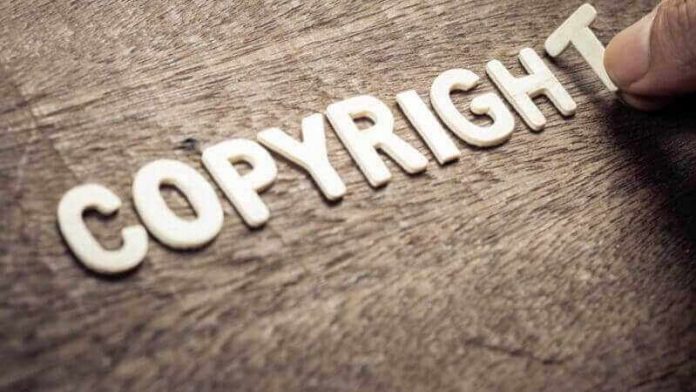This article was written by Ria Roy, pursuing a Diploma in General Corporate Law & Practice: Transactions Governance & Disputes from LawSikho and edited by Koushik Chittella.
It has been published by Rachit Garg.
Table of Contents
Introduction
India is a country rich in culture, and the importance given to cultural activities is immense in our country, and music is a major part of that. Hence, it becomes necessary to have special copyright laws in place to ensure that no one is deprived of enjoying that cultural aspect, neither the producer nor the consumers. One such provision under the Copyright law is compulsory licencing. In simple words, it can be said to be a provision that lets the licencee use the work without prior approval from the owner of the copyright. This article briefly discusses the compulsory licencing of a sound recording and related provisions in the Copyright Act, 1957.
What is a licence
A licence acts as a tool to transfer copyright interests. It allows a licencee to use a copyrighted work with some restrictions in exchange for some consideration.
What is Compulsory licencing
Compulsory licencing is a statutory provision that allows a licencee to use a work of copyright without requiring approval from the owner of the copyright while at the same time protecting the rights of the copyright holder by preventing infringement.
For example, subject to certain other conditions, a piece of music can be publicly broadcasted without authorisation from its author if he gets a royalty for it. Such a licence can be obtained by an order of the Commercial Court, subject to certain terms and conditions being fulfilled.
The Berne Convention
The Berne Convention plays a vital role in the history of compulsory licencing under copyright law. India became a signatory to the Berne Convention on April 28, 1928, and adopted compulsory licencing under Articles 9 and 11 of the Berne Convention. This is the inspiration behind the conception of Section 31 of the Indian Copyright Act, 1957.
Laws governing compulsory licencing of sound recordings
The general process for obtaining a compulsory licence is submitting an application to the Commercial Court, justifying the reasons for granting the licence. The Court then makes an inquiry into the circumstances to analyse the merits of such a licence. If it is satisfied with the results, it directs the Registrar of Copyright to grant the licence to the applicant. The Order also contains conditions such as the amount of royalty to be paid, the duration of the validity of the licence, and such other terms as it may deem fit.
The various categories or circumstances under which an application for a compulsory licence may be made are available under Sections 31-31D of the Act. They are:
- Section 31 of the Indian Copyright Act, 1957, gives provisions for compulsory licencing of a copyrighted sound recording or music if it is kept away from the public by refusing its republication, performance, or broadcast in a public domain.
- Section 31A of the Indian Copyright Act, 1957, outlines the procedure for obtaining a compulsory licence in case of an unpublished sound recording or in case of a published sound recording that is not accessible by the public in India if the creator of such recording is dead or cannot be located or contacted.
In order to qualify for an application to the Commercial Court under this clause, the applicant must publish his proposal in a major daily English newspaper in India, and if it involves a translation of the copyrighted work, it should also be published in a newspaper of the translation language.
- Section 31B of the Indian Copyright Act, 1957, provides compulsory licencing of copyright works if it can be shown that they profit or benefit persons with disabilities. The Court must be satisfied that the application was made in good faith. Concerns of the copyright owners will also be considered, and after that, the Court can direct the Registrar of Copyrights to grant the licence along with the manner of publication to be followed.
- Section 31C of the Indian Copyright Act, 1957, provides in vast detail, the conditions for obtaining a licence for creating a cover version of a sound recording or a musical work:
- Sound recordings of said work must have been made earlier with the approval of the copyright holders or licencee.
- The sound recording must be made in the same medium as the last recording if it continues to be in commercial use.
- The person intending to make the sound recording must give notice of his intention.
- Samples of the cover version or labels must be provided in advance.
- Royalties in respect of all copies must be paid to the owner of the copyright in advance.
- The sound recording should not be advertised or packaged in any manner that may mislead the public regarding the identity of the artist and hence take undue advantage of the owners. The involvement of any performer or entity related to the previous and original sound recording must not be implied.
- It must be clearly stated on the product that it is a cover version.
- Before 5 years have passed from the date of creation of the original sound recording, no alteration must be made to it, unless it is a technical necessity, if it has not been made, or without the permission of its author.
- One royalty must be paid for each copy of the sound recording in each year. The amount to be paid is a minimum of Rs. 50,000, unless the Court fixes a lower minimum based on the lower potential circulation of the work in a less popular language or dialect.
- Registers containing details of existing stock, as may be prescribed, must be made available to the copyright holder or his authorised agent for inspection.
If a complaint regarding the violation of any requirement is found valid, the Commercial Court can order ex parte (without consideration for the licencee) that further copies of the sound recording not be made.
- Section 31D of the Indian Copyright Act, 1957, lays out terms and conditions for obtaining a compulsory licence for the broadcasting of a sound recording:
- The broadcasting organisation must give notice of its intention along with details of the duration and territorial coverage of the broadcast.
- The Commercial Court will fix the rate of the royalty. The rates of royalty for radio broadcasting and television broadcasting are different. An advance may be required to be paid to the copyright owners.
- The names of artists of the original work must be announced along with the broadcast, except if it is communicated by way of a performance.
- No fresh alteration must be made to the sound recording except if required from a technical standpoint or to shorten the work for broadcasting convenience.
- Records or books of account in respect of the broadcast must be maintained in the prescribed manner and made available to the copyright owner or his representative for inspection.
Elements of a compulsory licence of a sound recording

The elements of a compulsory licence for a sound recording are:
- The rights and works licenced should be clearly specified. The more specific it is, the less scope there will be for misuse.
- The rate of royalty that is to be paid as consideration.
- The duration until the licence is valid.
- Geographical boundaries where the licence is applicable may be set.
- Terms of use as to in what manner and extent the copyrighted work may be used, produced, modified, or broadcasted.
- Any other terms and conditions to protect the copyrighted work from being misused.
- Termination clause, in which circumstances licence rights will cease.
- Breach of terms, compensation, or specific performance in such a case.
Significance of a compulsory licence
A compulsory licence limits a copyright holder’s rights by allowing other parties to produce, use, or sell copyright content without the copyright holder’s approval. The fundamental aim of a compulsory licence is to ensure that copyrighted content is accessible. Copyright laws exist to protect the results of the hard work and creative ideas of artists. However, there is also a social obligation to make such works available for fair use and enjoyment by the public. Sometimes, copyright holders refuse to part with their work. It would seem that a licence obtainable without the artists’ permission is in violation of the goals of copyright. But, it is also necessary to prevent the breach of the public’s rights, to keep the free flow of ideas running, or even for academic purposes. A compulsory licence protects the rights of both the artist and the audience and strikes a perfect balance between the two.
A question that may arise in this context is why an artist would unreasonably refuse something that may make his work even more famous. The answer to that is very cliche: “It is human to make mistakes.” Apart from a bad business decision, there may be insecurity and other negative emotions.
It must be noted that a compulsory licence does not only exist to majorly benefit the licencee. The author or their kin gain additional income. In situations such as the artist being dead or untraceable, it also helps to honour the artist’s work or help it gain the recognition and praise it deserves.
Breach of terms of a compulsory licence
Dealing with copyright disputes can be costly and time-consuming. If the terms of the licence have loopholes or the licencee’s activities are not monitored meticulously, undue advantage may be taken. Conversely, the reputation of the copyright holder, the artist’s reputation may be tarnished due to acts like poor reproduction of the sound recording.
Breaching the terms of a licence can be considered a breach of contract or a copyright infringement, depending on the type of breach, whether material or non-material. In the absence of such terms specifically mentioned, the Court will analyse and award appropriate remedies to the infringing party.
Customarily, these remedies may be provided:
- Civil remedy of injunction (ceasing the licence rights or payment of compensation).
- If the copyright infringement falls under the definition of an offence, the penalty for the same would be six months of imprisonment and a fine of Rs. 50,000/-.
- Specific compensation for any loss or damage to the copyright holder.
Relevant case laws
Entertainment Network (India) Ltd. vs. Super Cassette Industries Ltd. (2008)
- The question raised in the instant case was whether, if a compulsory licence had already been granted to a broadcaster, another broadcaster did not qualify for it anymore. The Hon’ble Supreme Court held that such an interpretation was not justified. It would mean favouring only one licencee, which would be anomalous to the purpose of Section 31. Literal interpretation should be avoided if it leads to absurdity. So, it is wrong to contend that a compulsory licence can be granted to only one broadcaster. It will depend on the Copyright Board whether such subsequent licences should be granted or not.
- The Hon’ble Supreme Court refused to lay down principles of valuation because each case would have its own different circumstances and merits. Apart from the unique facts, the Copyright Board may have to take into consideration infringements already committed and to what extent.
- The question was raised whether unreasonable terms for a licence agreement implied refusal. The Supreme Court held that refusal may not be explicit. Willingness to grant a licence on unreasonable terms will also mean refusal.
Super Cassette Industries Ltd. vs. Music Broadcast (P) Ltd. (2012)
- The Hon’ble Supreme Court in the instant case held that the Copyright Board did not have the power to grant interim compulsory licence. It would amount to near-final relief if granted, and even regular courts have to exercise such powers with great caution.
- The Hon’ble Supreme Court held that a compulsory licence encroaches on the rights of a copyright holder, so it can only be granted if there is public interest involved, mere financial gain is incidental.
- The Hon’ble Supreme Court, explaining what can be considered unreasonable, stated that it could be decided only after the owner of the copyright was given a full hearing opportunity. If the creator feels that republication or performance of his sound recording will be so controversial that it will endanger his life, it is not “unreasonable”.
Conclusion
Contrary to what its name suggests, a compulsory licence is not something that a copyright owner is mandatorily required to grant. It is more like an obligatory licence that is granted in the interest of the public or the audience of the copyrighted work without breaching the rights of the copyright owner in the process. A musical work, poetry recital, audiobook, etc. in the form of a sound recording is created for the very purpose of entertaining the public. It would seem to go against the principles of natural justice if such enjoyment was unreasonably barred. As long as the creator of a sound recording gets paid consideration for his effort and creativity and is recognised and applauded for his achievement, there may be no reason left to stop the creation from being popularised more. Therefore, a compulsory licence in such a case is imperative to set things right.
References
- https://legalserviceindia.com/legal/article-10073-compulsory-licensing-under-copyright-law.html
- https://www.iiprd.com/impact-of-compulsory-licensing-on-music-rights-under-copyright-law/
- https://www.scconline.com/
Students of Lawsikho courses regularly produce writing assignments and work on practical exercises as a part of their coursework and develop themselves in real-life practical skills.
LawSikho has created a telegram group for exchanging legal knowledge, referrals, and various opportunities. You can click on this link and join:
Follow us on Instagram and subscribe to our YouTube channel for more amazing legal content.











